On the Use of Vibro-Compressed Units with Bio-Natural Aggregate
Abstract
:1. Introduction
2. Production Assessment
- TEST A:—hemp (15 mm)—60 kg—NHL 3.5–140 kg—water—100 kg
- TEST B:—hemp (6–15 mm)—60 kg—NHL 3.5–200 kg—water—109 kg
- TEST C:—hemp (15 mm)—60 kg—NHL 3.5–170 kg—cement type 32.5 MPa—30 kg—water—130 kg
- TEST D:—hemp (6–15 mm)—34 kg—hemp (6 mm)—34 kg—cement type 32.5 MPa—130 kg—water—134 kg
- TEST E:—cork (2–3 mm)—5.4 kg—NHL 3.5–20 kg—water—10 kg
3. Mechanical Tests
4. Results
5. Discussion
- (a)
- The best mix design with hemp and NHL from a mechanical point of view is type A, where the percentage of NHL is lower with respect to type B, probably due to the excessive amount of NHL in comparison with the other components or the insufficient amount of water that did not permit a complete hydration process.
- (b)
- The role of the cement in the mix design with hemp shives is not mechanically relevant with respect to the NHL: type C (with NHL and cement) has lower strength values, while the increment of strength due to the cement on type D is not significant.
- (c)
- All the specimens show reduced strength values, a moderate difference between σf and σc and high collapse strain: it means that the elements are not effective for load-bearing use whether employed for non load-bearing purposes or combined with structural elements..
- (d)
- All the specimens perform a ductile behavior due to the inelastic stress-strain law performed during the tests; joined with tension strength, they can be used in a composition with structural components (i.e., in the mix design of vibro-compressed concrete blocks) or for non-load-bearing applications on buildings (i.e., insulating panels, basement layers, separating walls).
- (e)
- The cork specimens show the best mechanical performances for structural purposes, achieving the maximum strain and compression strength and the lightest weight from the set of the products considered, along with relatively high tension strength.
- (f)
- Application on insulating panels, mainly for the cork composition, could be an interesting solution for masonry production in the field of bio-natural concrete elements.
- (g)
- The difficulties of performing an equilibrated mix design in the presence of hemp fibers or shives should be taken into account to evaluate the percentage of water absorbed by the hemp by subtracting it from the curing reaction of the binder. The reduced compatibility of the hemp with cement should also be considered.
- (h)
- The production process and the mechanical tests show that the proposed mix design can be easily adopted in the vibro-compression unit procedure. Further investigations should be done to address the proposed mix designs to the described applications.
Acknowledgments
Author Contributions
Conflicts of Interest
References
- Andreini, M.; De Falco, A.; Giresini, L.; Sassu, M. Mechanical characterization of masonry walls with chaotic texture: Procedures and results of in-situ tests. Int. J. Archit. Herit. 2014, 8, 1–32. [Google Scholar] [CrossRef]
- Andreini, M.; De Falco, A.; Giresini, L.; Sassu, M. Collapse of the historic city walls of Pistoia (Italy): Causes and possible interventions. Appl. Mech. Mater. 2013, 352, 1389–1392. [Google Scholar] [CrossRef]
- Andreini, M.; De Falco, A.; Giresini, L.; Sassu, M. Structural damage in the cities of Reggiolo and Carpi after the earthquake on May 2012 in Emilia Romagna. Bull. Earthq. Eng. 2014, 12, 2445–2480. [Google Scholar] [CrossRef]
- Sassu, M. The Reinforced Cut Wall (RCW): A Low-Cost Base Dissipator for Masonry Buildings. Earthq. Spectra 2006, 22, 533–554. [Google Scholar] [CrossRef]
- De Falco, A.; Giresini, L.; Sassu, M. Temporary preventive seismic reinforcements on historic churches: Numerical modeling of San Frediano in Pisa. Appl. Mech. Mater. 2013, 352, 1393–1396. [Google Scholar] [CrossRef]
- Sassu, M. Biaxiality effect on the energy dissipated by elastoplastic base-isolators. J. Eng. Mech. 2003, 129, 607–612. [Google Scholar] [CrossRef]
- De Bruijn, P. Material properties and full-scale rain exposure of lime-hemp concrete walls. Acta Univ. Agric. Suec. 2012, 68, 1652–6880. [Google Scholar]
- Elfordy, S.; Lucas, F.; Tancret, F.; Scudeller, Y.; Goudet, L. Mechanical and thermal properties of lime and hemp concrete (“hempcrete”) manufactured by a projection process. Constr. Build. Mater. 2008, 22, 2116–2123. [Google Scholar] [CrossRef]
- Diquélou, Y.; Gourlay, E.; Arnaud, L.; Kurek, B. Influence of binder characteristics on the setting and hardening of hemp lightweight concrete. Constr. Build. Mater. 2016, 112, 1506–1517. [Google Scholar] [CrossRef]
- Arnaud, L.; Gourlay, E. Experimental study of parameters influencing mechanical properties of hemp concretes. Constr. Build. Mater. 2012, 28, 50–56. [Google Scholar] [CrossRef]
- Gil, L. New Cork-Based Materials and Applications. Materials 2015, 8, 625–637. [Google Scholar] [CrossRef]
- Lu, N.; Korman, T. Engineering Sustainable Construction Material: Hemp-Fiber-Reinforced Composite with Re-cycled High-Density Polyethylene Matrix. J. Archit. Eng. 2013, 19, 204–208. [Google Scholar] [CrossRef]
- Eires, R.; Nunes, J.P.; Fanguiero, R.; Jalali, S.; Camoes, A. New eco-friendly hybrid composite materials for civil construction. In Proceedings of the 12th European Conference on Composite Materials, Biarriz, France, 29 August–1 September 2006.
- Bütschi, P.Y.; Deschenaux, C.; Miao, B.; Srivastava, N.K. Caractérisation d’une maçonnerie composée d’éléments en aggloméré de chanvre. Rev. Can. Génie Civ. 2004, 31, 526–529. (In French) [Google Scholar] [CrossRef]
- Woolley, T. Natural Building: A Guide to Materials and Techniques; The Crowood Press Ltd.: Marlborough, UK, 2006. [Google Scholar]
- Lawrence, M.; Fodde, E.; Paine, K.; Walker, P. Hygrothermal performance of an experimental hemp-lime building. Key Eng. Mater. 2012, 517, 413–421. [Google Scholar] [CrossRef]
- Martins, C.; Dias, A.M.P.G.; Costa, R.; Santos, P. Environmentally friendly high performance timber-concrete panel. Constr. Build. Mater. 2016, 102, 1060–1069. [Google Scholar] [CrossRef]
- Silva Pereira, C.; Soares, G.A.M.; Oliveira, A.C.; Rosa, M.E.; Pereira, H.; Moreno, N.; San Romao, M.V. Effect of fungal colonization on mechanical performance of cork. Int. Biodeterior. Biodegrad. 2006, 57, 244–250. [Google Scholar] [CrossRef]
- Pervais, M. Carbon storage potential in natural fiber composites. Resour. Conserv. Recycl. 2003, 39, 325–340. [Google Scholar] [CrossRef]
- Giresini, L.; Fragiacomo, M.; Lourenço, P.B. Comparison between rocking analysis and kinematic analysis for the dynamic out-of-plane behavior of masonry walls. Earthq. Eng. Struct. Dyn. 2015, 44, 2359–2376. [Google Scholar] [CrossRef] [Green Version]
- Giresini, L.; Fragiacomo, M.; Sassu, M. Rocking analysis of masonry walls interacting with roofs. Eng. Struct. 2015, 116, 107–120. [Google Scholar] [CrossRef]
- Giresini, L. Energy-based method for identifying vulnerable macro-elements in historic masonry churches. Bull. Earthq. Eng. 2015, 44, 2359–2376. [Google Scholar] [CrossRef] [Green Version]
- Giresini, L.; Sassu, M. Horizontally restrained rocking blocks: Evaluation of the role of boundary conditions with static and dynamic approaches. Bull. Earthq. Eng. 2016. [Google Scholar] [CrossRef]
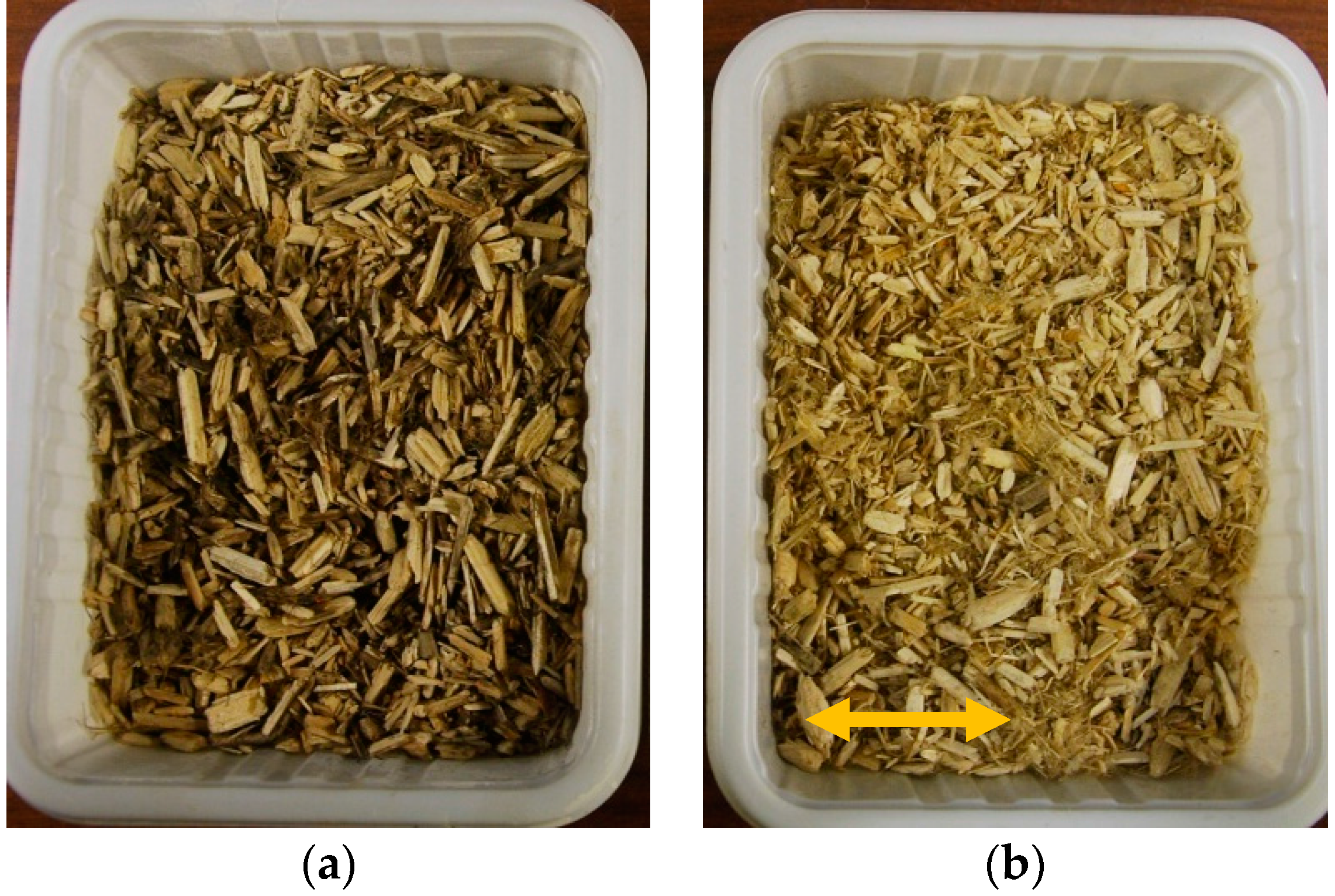
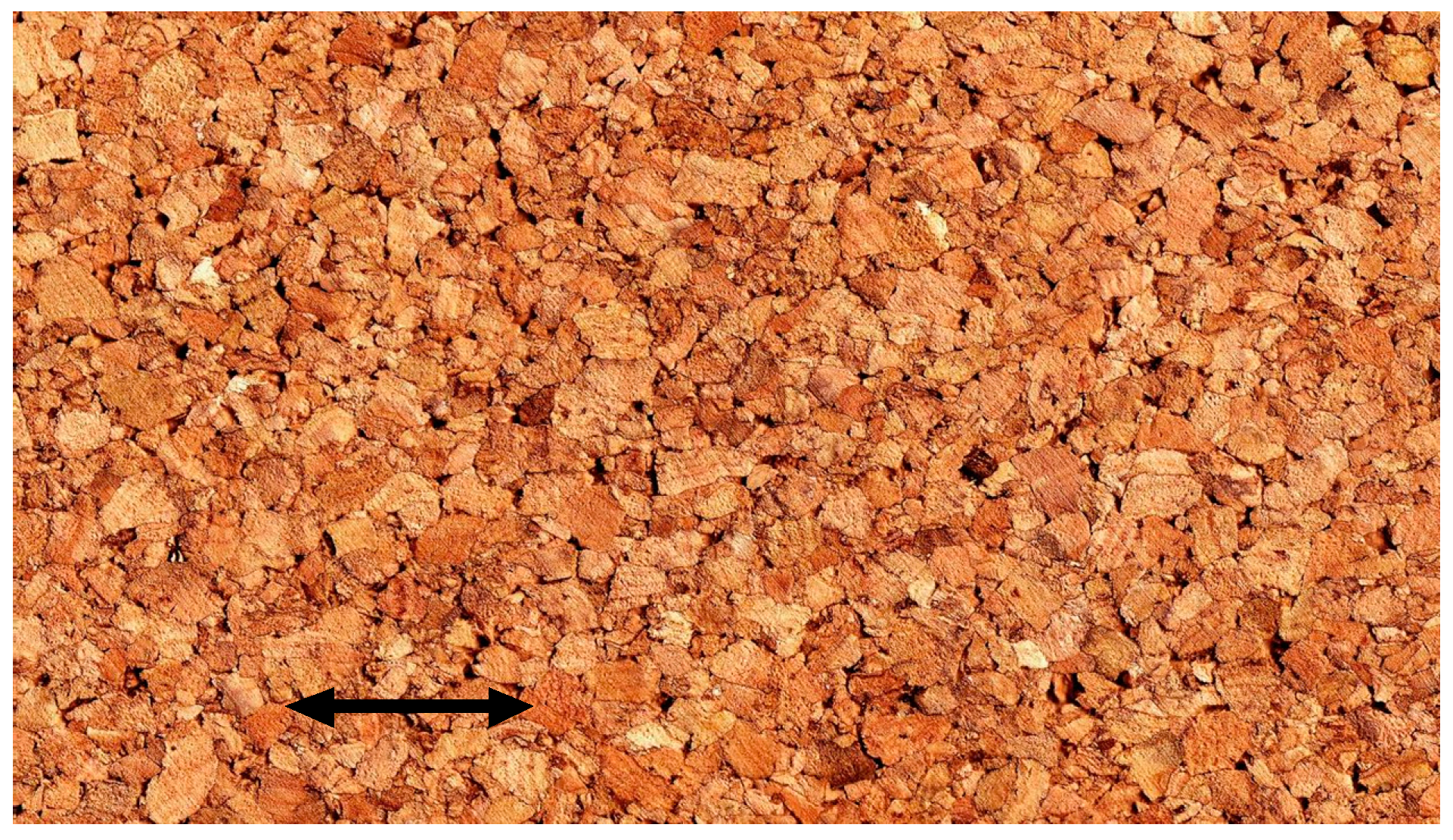
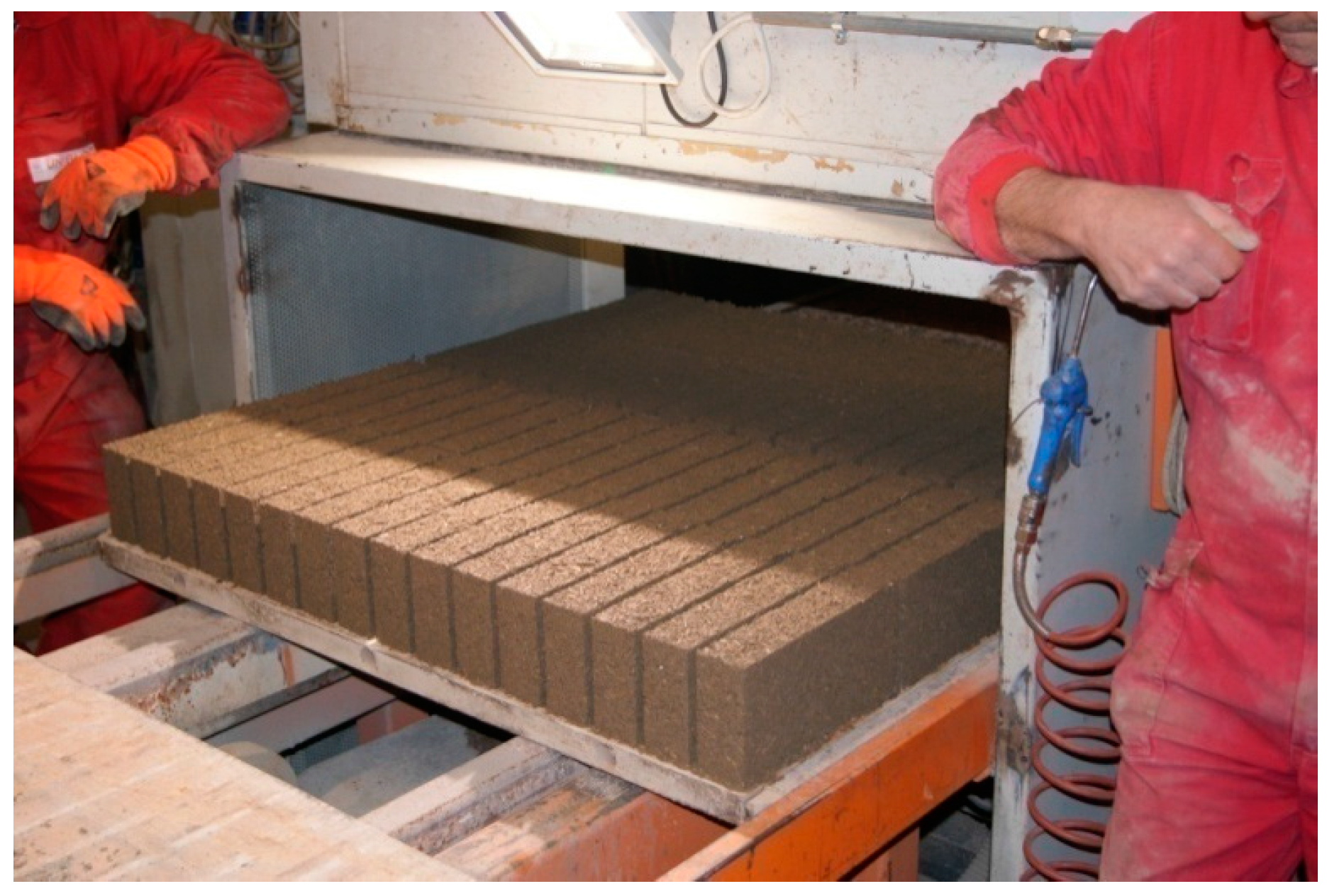
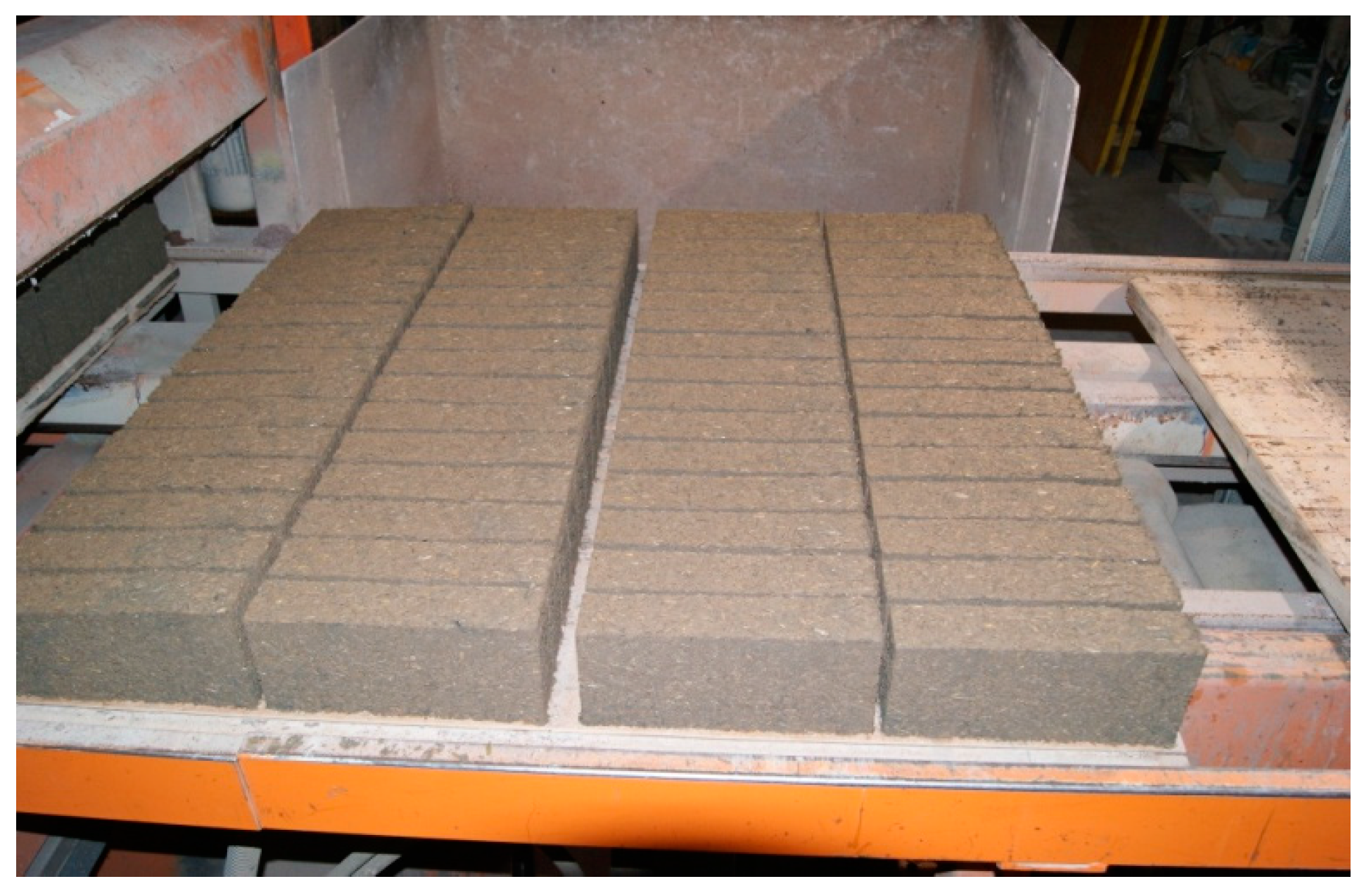
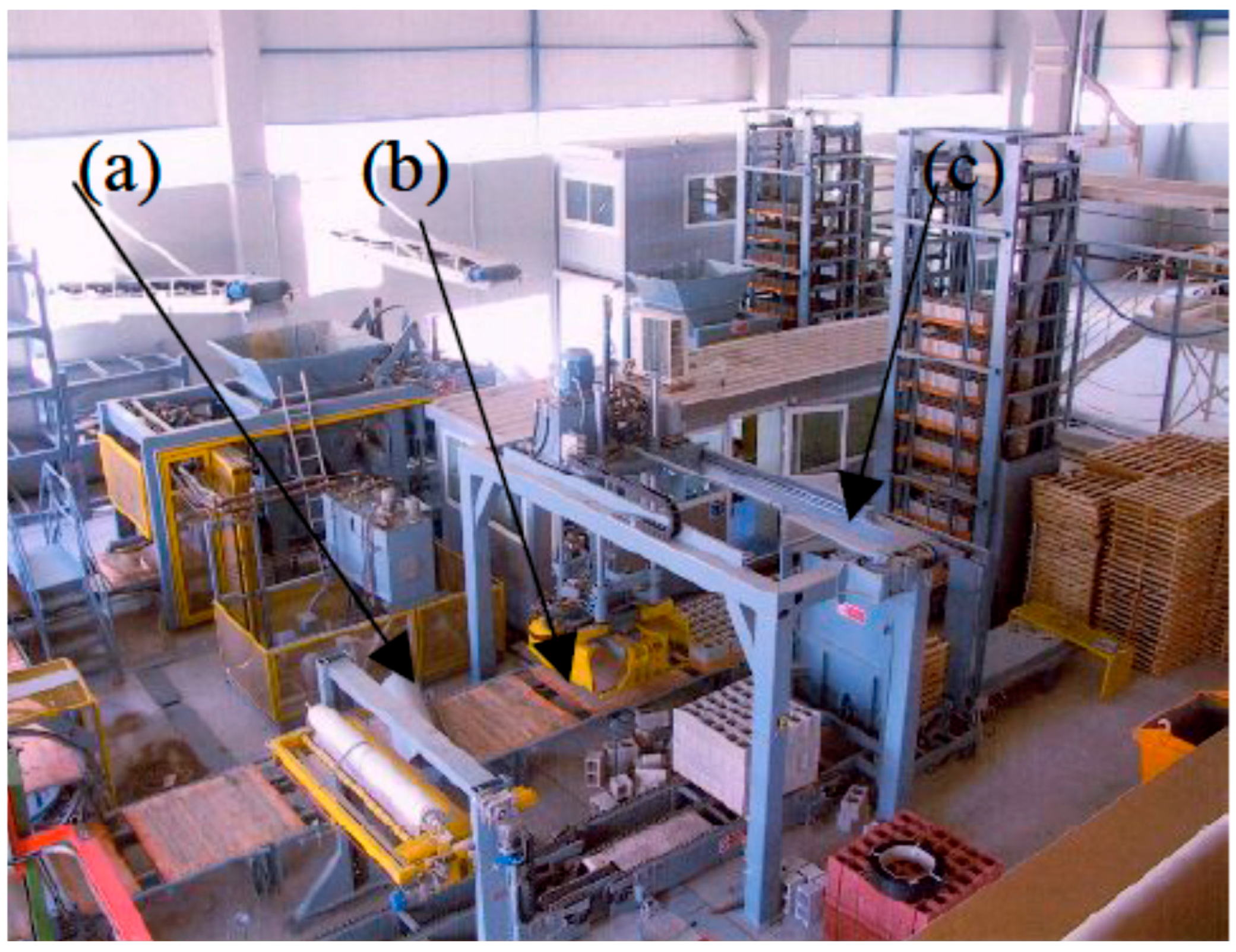
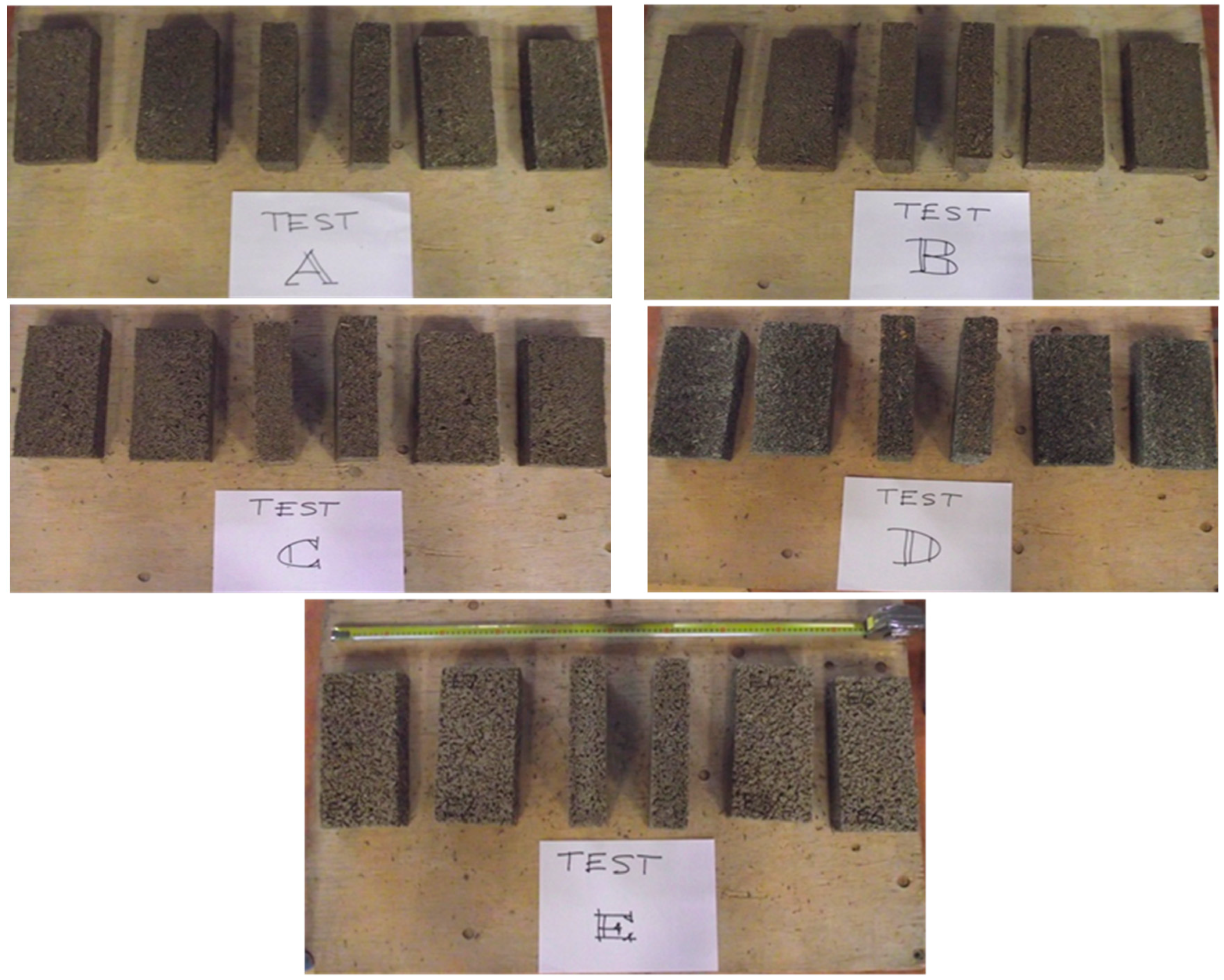
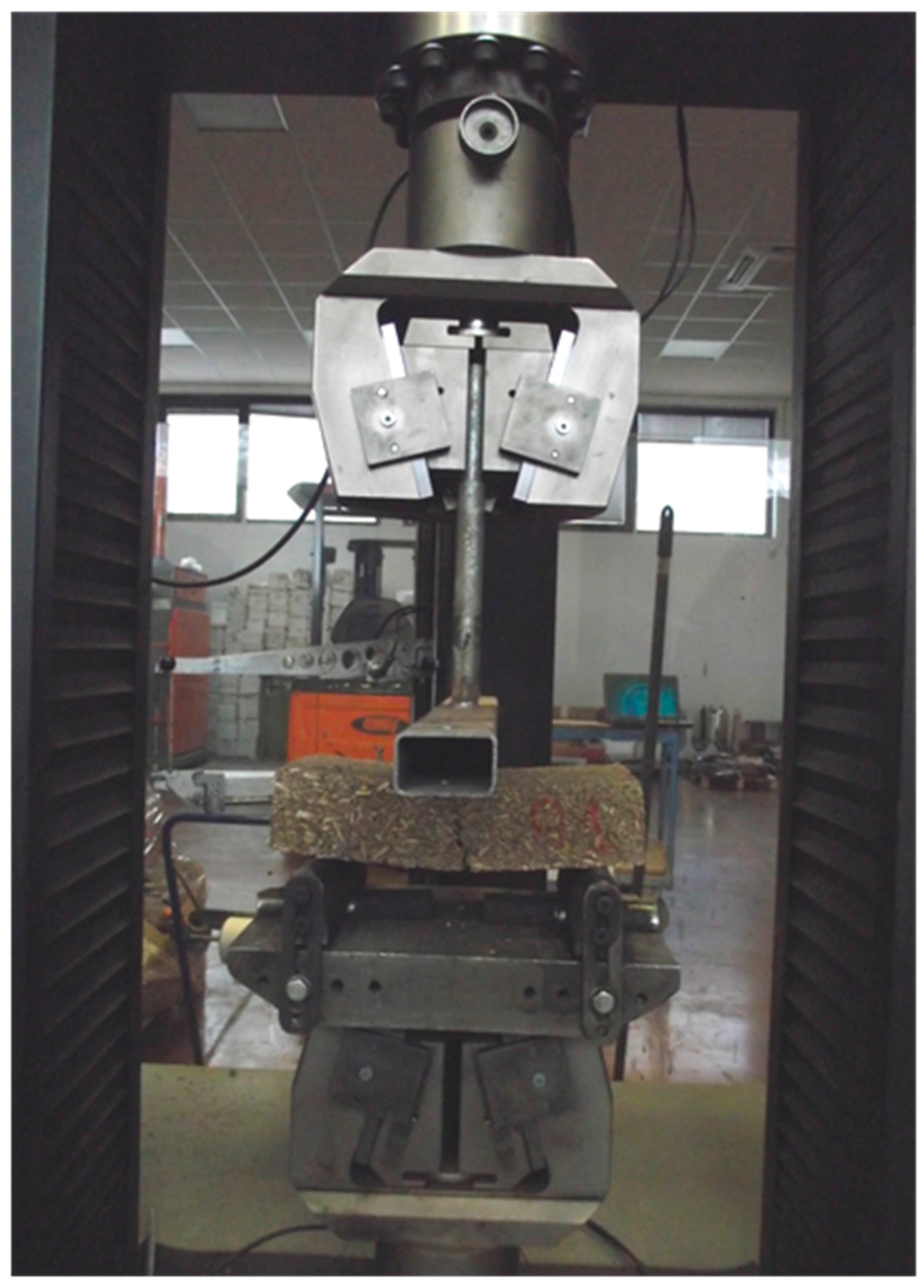



| Test A | 361 | 42 | 1.183 | 0.186 |
| Test B | 97 | 136 | 0.923 | 0.239 |
| Test C | 244 | 154 | 0.845 | 0.238 |
| Test D | 636 | 168 | 2.242 | 0.266 |
| Test E | 601 | 164 | 2.600 | 0.261 |
| Test A | 1034 | 130 | 1.655 | 0.644 |
| Test B | 318 | 95 | 1.980 | 0.422 |
| Test C | 892 | 115 | 1.750 | 0.289 |
| Test D | 1556 | 232 | 2.625 | 0.250 |
| Test E | 1830 | 63 | 3.500 | 0.000 |
| Test A | 643 | 0.299 | 0.414 | 0.0331 | 12,495 |
| Test B | 698 | 0.080 | 0.146 | 0.0431 | 3387 |
| Test C | 753 | 0.192 | 0.357 | 0.0350 | 12,190 |
| Test D | 638 | 0.4836 | 0.6222 | 0.0525 | 15,070 |
| Test E | 561 | 0.4502 | 0.7318 | 0.0700 | 18,570 |
© 2016 by the authors; licensee MDPI, Basel, Switzerland. This article is an open access article distributed under the terms and conditions of the Creative Commons Attribution (CC-BY) license (http://creativecommons.org/licenses/by/4.0/).
Share and Cite
Sassu, M.; Giresini, L.; Bonannini, E.; Puppio, M.L. On the Use of Vibro-Compressed Units with Bio-Natural Aggregate. Buildings 2016, 6, 40. https://doi.org/10.3390/buildings6030040
Sassu M, Giresini L, Bonannini E, Puppio ML. On the Use of Vibro-Compressed Units with Bio-Natural Aggregate. Buildings. 2016; 6(3):40. https://doi.org/10.3390/buildings6030040
Chicago/Turabian StyleSassu, Mauro, Linda Giresini, Elisa Bonannini, and Mario Lucio Puppio. 2016. "On the Use of Vibro-Compressed Units with Bio-Natural Aggregate" Buildings 6, no. 3: 40. https://doi.org/10.3390/buildings6030040







